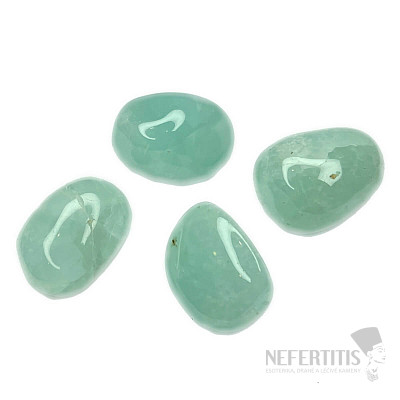Rotten drummed
Rotten drummed
AA quality tumbled rot, transparent, without major inclusions. In folk tradition, Prehnit is a stone of unconditional love, which brings peace and protection, harmonizing the entire surrounding environment of its… more »
Buy and get shipping for 5 €
view shipping options
| Parcel service DE [EN] | 5.50 € | |
| Parcel service LT [EN] | 7.40 € | |
| Parcel service LU [EN] | 5.60 € | |
| Parcel service LV [EN] | 7.40 € | |
| Parcel service NL [EN] | 5.80 € | |
| Parcel service PL [EN] | 5 € | |
| Parcel service PT [EN] | 10.60 € | |
| Parcel service RO [EN] | 7.30 € | |
| Parcel service SE [EN] | 9.30 € | |
| Parcel service SI [EN] | 7.50 € | |
| Parcel service IT [EN] | 9.10 € | |
| Parcel service IE [EN] | 12.60 € | |
| Parcel service AT [EN] | 5.50 € | |
| Parcel service BE [EN] | 5.80 € | |
| Parcel service BG [EN] | 13 € | |
| Parcel service EE [EN] | 7.50 € | |
| Parcel service ES [EN] | 10.40 € | |
| Parcel service FI [EN] | 12.70 € | |
| Parcel service FR [EN] | 8.90 € | |
| Parcel service HR [EN] | 6 € | |
| Parcel service HU [EN] | 5.10 € | |
| Parcel service DK [EN] | 5.90 € |
Rotten drummed
AA quality tumbled rot, transparent, without major inclusions. In folk tradition, Prehnit is a stone of unconditional love, which brings peace and protection, harmonizing the entire surrounding environment of its wearer. In some cultures, people believe that rotting helps turn the home into a literal sanctuary of health, as it is said to revitalize and restore the surrounding environment. It is considered a stone that brings knowledge of how to get in harmony with nature and natural energies. It is said to suppress nightmares, phobias and persistent fears. A suitable stone for healers and furnishing an apartment or office according to Feng Shui teachings. Green colored stones are traditionally used to suppress stress and tension. Harmonizes the heart chakra. Illustrative image.
Country of origin: Prospect Hill Quarry, New South Wales, Australia
Prehnite is named after Colonel Hendrik von Prehn (1733 - 1785), who brought back samples of the mineral from the Cape of Good Hope in 1783. Mineralogist Abraham Gottlob Werner named it after the colonel.
The description of the alleged properties of the stone, which do not relate to its chemical and physical properties, is given on the basis of generally disseminated and generally available information about the traditional folk use of the stone, which has not been verified by science, and is therefore not a proposal for concluding a purchase contract according to Act 89/2012 Coll.




